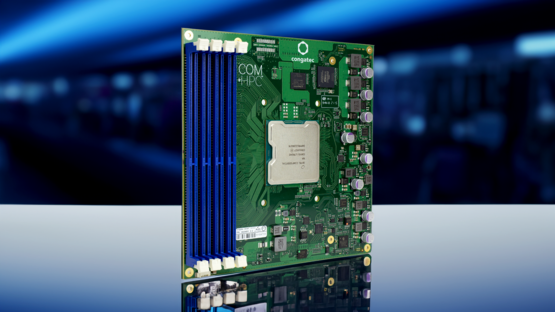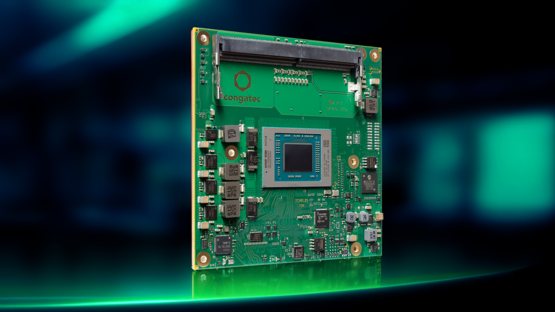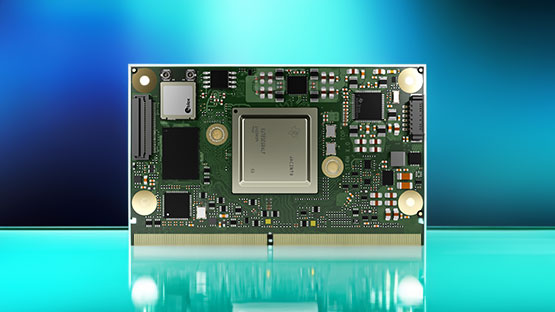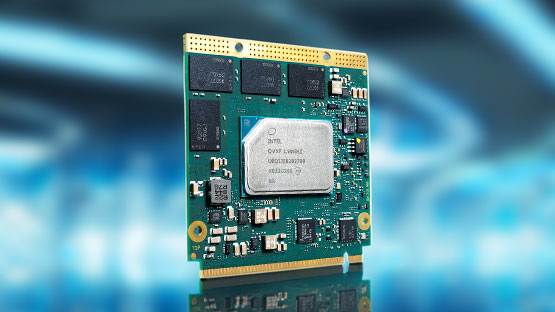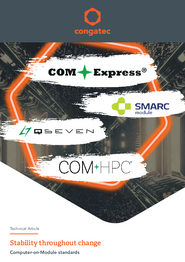
The Computer-on-Module concept
Your fastest way to dedicated systems with high design security & agility
What are CoMs?
Computer-on-Modules (CoMs) are small circuit boards that are plugged into standardized connectors on an application-specific carrier board. As application-ready super-components, these modules include all key embedded computing building blocks such as CPU, GPU, and RAM as well as a broad set of standard interfaces in a function-validated complete package.
Within one CoM standard, all interfaces are routed via the same dedicated signal pins to the standard-compliant carrier board, which makes modules interchangeable across different vendors and processor generations.
The application-specific circuit parts are accommodated on the carrier board. When designing your carrier board, you decide which of the electrically available computer properties you actually need, and which extensions you want to develop.
This CoM approach enables engineers to cost effectively design innovative solutions within the shortest time to market and to stay highly agile to adapt to technical evolutions.
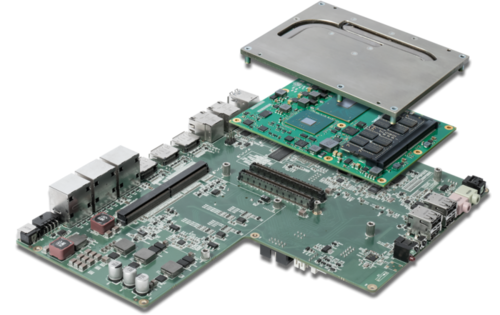
All advantages at a glance
Faster time to market
CoMs save time as they separate the application-specific design work from the underlying embedded computing technology. Designers can fully concentrate on their core competencies and leave the computing functionality to the CoM.
Lower development cost
CoMs save money compared to full custom designs by reducing the non-recurring engineering costs for development and upgrades. With standardized CoMs, developers don’t have to spend time on a complex design-in process.
Reduced design risk
CoMs minimize risk. Basic changes during the design phase, or in the middle of a product‘s lifecycle, are easily managed. Simply plug in the next-generation computer module and continue. Easily design whole product families using different CoMs on one basic design.
Increased agility
CoMs are highly scalable to meet all performance requirements, from low-power to high-performance, and from Arm technology to x86. Conquer the challenges of rapid technological evolution with a simple module change to implement more performance and new possibilities like AI.
Maximized ROI & sustainability
CoMs increase the lifetime of your application. Existing designs can easily be upgraded to fulfill new and unforeseen demands with a simple module change. Even systems that have been in use for several years can be upgraded, extending the lifespan of your hardware.
Increased investment security
CoMs make your application independent from technological changes, obsolescence challenges and technology provider as they enable a seamless migration to newer technologies and different providers while preserving compatibility and software investments.
Our high-performance CoM ecosystems
Depending on your performance, bandwidth and space requirements, we offer different high-performance ecosystems. Namely: COM-HPC, COM Express, SMARC and Qseven.
COM Express
Your most versatile building blocks, from battery-powered mobile devices to entry-level embedded servers
Computer-on-Module standards
A lot is happening in the Computer-on-Module market today. With SMARC 2.1, a new version of the low-power module specification is now available. And COM-HPC, the soon-to-come high-end embedded computing standard, is also raising many new questions. So what do OEMs and system designers need to know?
Download Technical Article
Video: What are Computer-on-Modules?
Duration: 1:42 min
Discover how Computer-on-Modules (CoMs) accelerate hardware development, increase design agility, unlock avenues for innovation, and simplify sourcing, ultimately paving the way for the creation of successful products.
FAQs
Q1: What are Computer-on-Modules (CoMs) and why are they attractive for embedded system designs?
Computer-on-Modules are leading platforms for embedded system designs. They enable easy customization with higher design security, reduced design effort, increased ROI and greater sustainability by providing an application-ready super-component.
Q2: What drives the popularity of Computer-on-Modules in the embedded computing market?
Studies show that Computer-on-Modules are the dominant embedded form factors, projected to experience strong growth driven by the needs of industrial automation and Industry 4.0. IHS Markit and Research and Markets predict significant growth to meet customization demands and adoption in the IoT segment.
Q3: How do Computer-on-Modules enhance design efficiency?
Computer-on-Modules decouple application development from the underlying and highly complex embedded computing technology. As a result, designers can fully concentrate on their core competencies and their primary task: developing market-leading solutions.
Q4: What is required to upgrade my applications to new processor technology and new capabilities?
Two simple steps:
- Unplug the old module
- Plug in the new one with the required capabilities
But please make sure to stay within the same standard and power envelope to avoid cooling issues.
Q5: Why are there different Computer-on-Module standards?
As processor technology evolves, new features, interfaces and capabilities become available. These have to be executed by the module connectors. For example, COM-HPC brings PCIe Gen 5 and Thunderbolt to embedded computing. These interfaces weren’t available when COM Express was standardized in 2005. Additionally, different performance, power and size demands require specialized standards like SMARC for extremely compact low-power designs.
Q6: How long can I run my designs with Computer-on-Modules?
For several decades. Take COM Express, for example. This vendor-independent standard hosted by the PICMG since 2005 boasts the longest market presence. It is consistently maintained and evolved, as the COM Express specification 3.1, which upgrades COM Express modules to PCIe Gen 4, shows. New modules are released with each successive x86 processor generation,. It is reasonable to expect that COM Express will continue to be actively enhanced for at least another decade. Then the standard would be 30 years old, with no apparent end in sight.


